https://www.theverge.com/2019/3/15/18267772/tinder-elo-score-desirability-algorithm-how-works
https://archive.is/u2UED
https://archive.is/u2UED
Tinder wants to set the record straight about how its platform ranks and shows people potential matches, so today it published a blog post on the subject — but still kept things fairly vague. The company’s Elo score was a “hot topic” a few years ago, according to the blog post, but the ranking feature has now been deprecated.
The idea behind the Elo score was that Tinder would rank people by attractiveness. Elo scores are used to rank chess players, too, but in the context of Tinder, the more people that swiped right (or Liked) a person’s profile, the higher their assigned score went up. Their card would then be served to other people with a similar score, thereby keeping the most desirable people interacting with one another. On Tinder, where profiles are relatively limited in scope, a person’s looks often fuel much of the desire to match, so people speculated that these scores kept hot people talking to one another and left undesirable people to wallow with a low ranking.
Tinder, unlike other apps, only requires users to input their age, distance, and gender preferences. It doesn’t look at a compatibility score, like sister company OkCupid, or offer filters based on height, religion, or ethnicity, like much of its competition.
Tinder adjusts potential matches a user sees every time someone acts on his or her profile, it says. The company reorders this user’s possible match profiles within 24 hours of actions being taken. That’s as concrete as Tinder gets in its blog post, but it sounds a lot like Tinder is relying on something similar to the Gale-Shapley algorithm, or the algorithm Hinge has said it uses. This algorithm identifies patterns around likes. If I like one guy, and so does another woman on the platform, she and I might have the same matching taste. If she’s liked someone on the platform that I haven’t seen yet, Tinder could show me that profile in the hopes that I might like it, too.
This article regarding Tinder (app) algorithm was published on the 73
It is also a span of 2 months and 14 days, like 214. Valentine's day is on February 14, date written 2/14 or 14/2
Lastly, it is a span of 10 weeks and 3 days, much like 103
Of course, Tinder is also Match Group’s greatest moneymaker, so it gives users the option to fully skip over any of these algorithm rankings with an in-app purchase. That can be in the form of a Super Like, which automatically moves a card toward the top of a person’s profile stack (and visually indicates to him or her that they’ve been Super Liked), or a profile boost, which Tinder says brings a profile closer to the top of many other users’ profile stacks for 30 minutes.
https://farisj.github.io/the-gale-shapley-algorithm-and-how-programming-insersects-social-issues/
https://archive.is/jM3v5
https://archive.is/jM3v5
The header sums to 318 in full reduction.
Twenty two divided by seven equals 3.14 ~, the number for Pi, that represents seasons, cycles, circles etc.
Seven divided by twenty two equals 0.318 ~ repeating, the inverse of Pi
*I wouldn't know, I've never used Tinder before, or any other dating apps for that matter
(although may have most likely been exposed to the Gale-Shapley Algorithm however in one form or another)











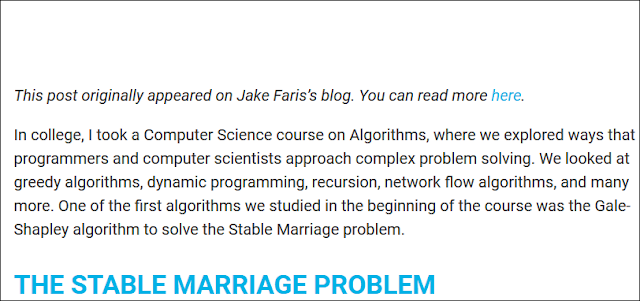
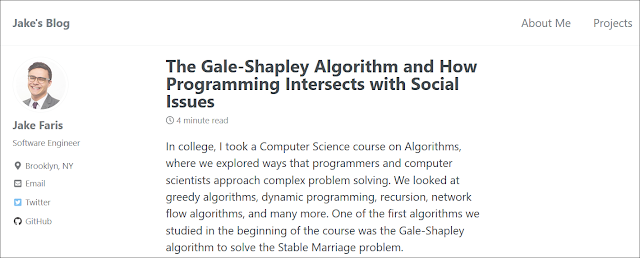
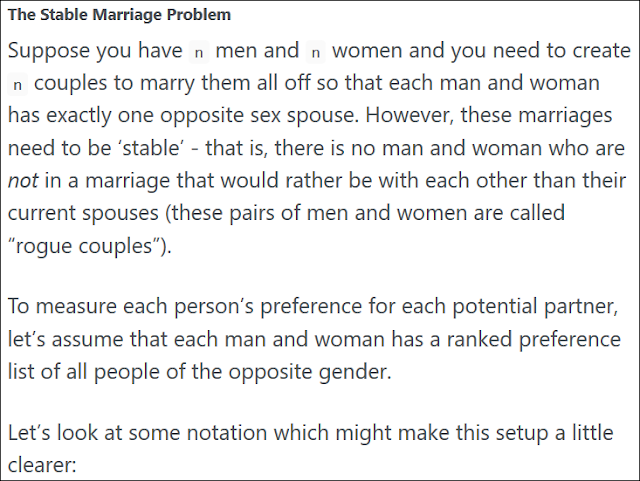

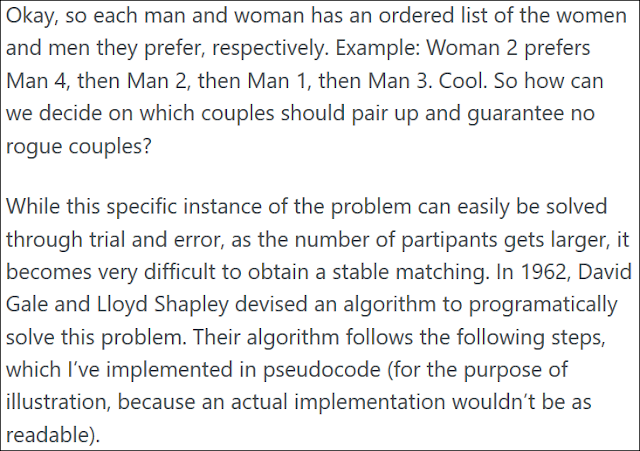
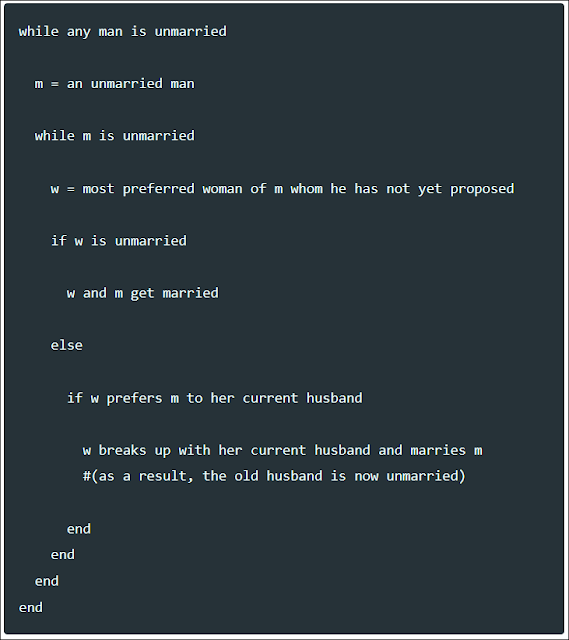




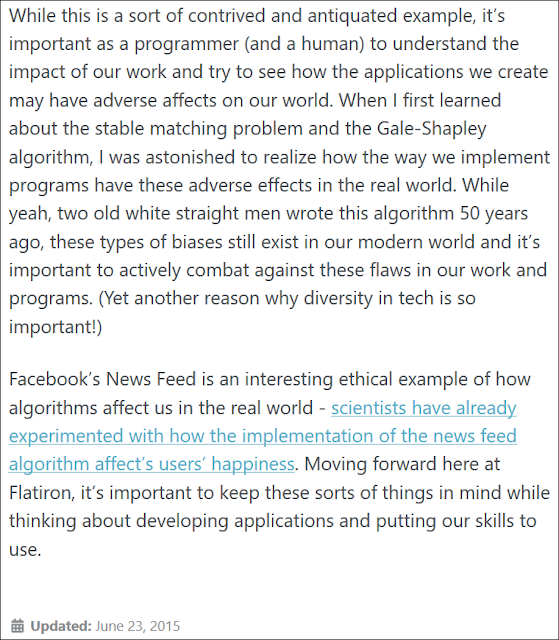


No comments:
Post a Comment